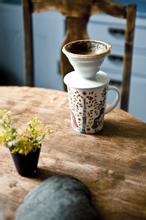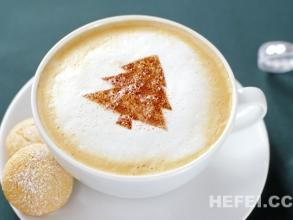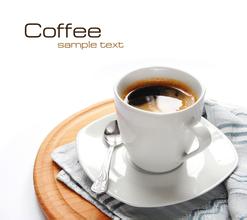Introduction of Coffee Flavor and Taste planting Environment in Snow vein Manor, Bolivia
There are mainly light industries such as food processing, wine making, cigarettes, textiles and so on. Mining is an important part of the Bolivian national economy. It is an exporter of mineral products and is rich in mineral resources, including tin, antimony, tungsten, silver, zinc, lead, copper, nickel, iron and so on. It has proven oil reserves of 188 million barrels and natural gas of 1.13 trillion cubic meters. The forest area is 56 million hectares. Coca cultivation plays an important role in the Bolivian national economy. Agricultural and animal husbandry products can meet most of the domestic demand. The main food crops are corn, rice, wheat, potatoes and soybeans. The main railway and road networks are concentrated in the west, and remote areas rely on air communication. In 1991, the total length of the highway was 41700 km. The railway has a total length of 3656 kilometers. There are three domestic airlines, including Bolivia's Lloyd Airlines, by air. The navigable river is more than 19800 kilometers. Due to inconvenient transportation, communication difficulties and lack of infrastructure, tourism is relatively backward. Located in central South America, landlocked countries. It is bounded by Brazil in the northeast, Paraguay in the southeast, Argentina in the south, Chile in the southwest and Peru in the west. It belongs to temperate climate. Population 9.025 million (2003). The urban population is 6.213 million, accounting for 68.8% of the total population, and the rural population is 2.812 million, accounting for 31.2% of the total population. Among them, Indians account for 54%, Indo-Europeans account for 31%, and whites account for 15%. The official language is Spanish. The main national languages are Quechua and Aymara. Most residents believe in Catholicism. Legal capital (seat of the Supreme Court): Sucre, part of the Inca empire in the 13th century AD. It became a Spanish colony in 1538, known as Peru in history. Independence was declared on August 6, 1825, named the Bolivarian Republic in honor of Bolivar the liberator, and later changed to its present name. It formed a federation with Peru in 1836 and collapsed as a result of the Chilean invasion in 1839. In 1863, rich saltpetre deposits were discovered in Atacama province along the Pacific coast. In 1879, Chile sent troops to occupy the mining area, and Bolivia joined forces with Peru to wage the "Pacific War" with Chile. Bolivia was defeated in 1883 and ceded the saltpetre-rich Pacific coast to Chile and has since become a landlocked country. In 1932, Bolivia and Paraguay went to war for oil resources in the North Chaco region. Bolivia was defeated and lost a large area of territory.
The people's armed uprising broke out in April 1952, and Paz Estenssoro, leader of the nationalist revolutionary movement, became president. Since then, there have been frequent military coups and long-term political instability. Democracy was restored in October 1983. Treatment method: wet treatment
Appearance: 2dmax 300grr 18SCR 17-gr.
Variety: Tibica
Note: this is a lively, bright and vibrant coffee. Dry aroma is an unusual nutty aroma, somewhat similar to peanut butter. The wet aroma has aromas of vanilla and flowers. The palate is delicate, with apple sweetness and flavors of chocolate and vanilla.
Dry aroma (1-5): 3.6
Wet aroma (1-5): 3.7
Acidity (brightness) (1-10): 8.8
Taste (layered) (1-10): 8.6
Taste (alcohol thickness) (1-5): 2.9
Aftertaste (residue) (1-10): 8.5
Balance (1-5): 0
Basic score (50): 50
Total score (maximum 100): 86.1
Intensity / main attributes: light intensity / delicate flower and fruit composition balance
Recommended baking degree: city+ or full city+
Contrast: light and lively; the flavor is close to the Kaddura coffee produced in Panama
Dry fragrance: various flowers, sweet vanilla, full aroma, sweet spices, honey
Wet fragrance: flower fragrance, refreshing perfume, sweet chocolate, berries
Sipping: many kinds of floral aroma, excellent cleanliness and fineness, high vanilla sweet, delicate sugar, peach, apricot, sour and sweet, premium Burgundy red wine, vanilla plant, green apple, white grapefruit, essential oil aroma, delicate and smooth touch, sweet finish and long-lasting aroma

Important Notice :
前街咖啡 FrontStreet Coffee has moved to new addredd:
FrontStreet Coffee Address: 315,Donghua East Road,GuangZhou
Tel:020 38364473
- Prev

Introduction of Fine Coffee in Fenghuang Manor, Costa Rica
The current Constitution entered into force on November 7, 1949. The Constitution stipulates that the state implements a republic with the separation of legislative, judicial and executive powers. The General Audit Office and the Supreme Electoral Court are independent bodies. The President shall be the head of State or Government and may stand for re-election every other term; the President and Vice President shall be directly elected for a term of four years; when the President is absent, the first Vice President and the second Vice President shall negotiate in turn.
- Next

Introduction to the planting Environment of Flavor and taste in the Coffee Manor of Arusha, Tanzania
The topography of Tanzania is high in the northwest and low in the southeast, showing a ladder shape. The eastern coast is a lowland, the western inland plateau accounts for more than half of the total inland area, and the East African Rift Valley runs from east to west from Lake Malawi to the north and south. The Kibo peak of Mount Kilimanjaro in the northeast is 5895 meters above sea level, which is the highest peak in Africa. [6] Climate in the eastern coastal areas of Tanzania and part of the lowland heat in the interior
Related
- Does Rose Summer choose Blue, Green or Red? Detailed explanation of Rose Summer Coffee plots and Classification in Panamanian Jade Manor
- What is the difference between the origin, producing area, processing plant, cooperative and manor of coffee beans?
- How fine does the espresso powder fit? how to grind the espresso?
- Sca coffee roasting degree color card coffee roasting degree 8 roasting color values what do you mean?
- The practice of lattes: how to make lattes at home
- Introduction to Indonesian Fine Coffee beans-- Java Coffee producing area of Indonesian Arabica Coffee
- How much will the flavor of light and medium roasted rose summer be expressed? What baking level is rose summer suitable for?
- Introduction to the characteristics of washing, sun-drying or wet-planing coffee commonly used in Mantenin, Indonesia
- Price characteristics of Arabica Coffee Bean Starbucks introduction to Manning Coffee Bean Taste producing area Variety Manor
- What is the authentic Yega flavor? What are the flavor characteristics of the really excellent Yejasuffi coffee beans?

